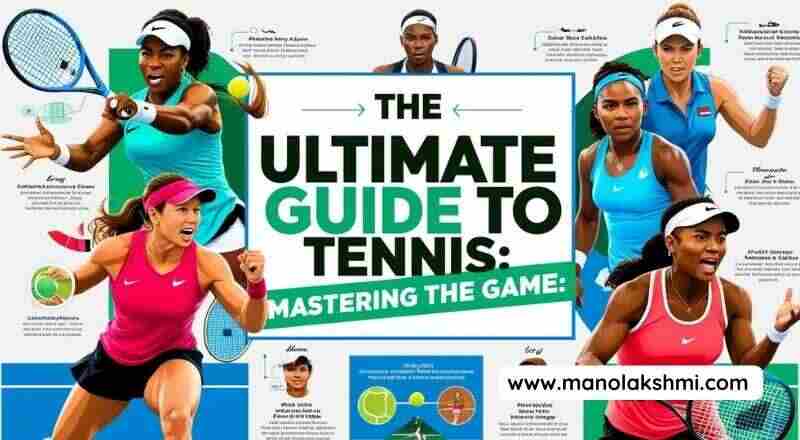- Brief History of Tennis
- Objectives of the Guide
- Importance of Mastering the Fundamentals
- Equipment and Gear
- Types of Tennis Racquets
- Tennis Balls
- Types and Brands:
- Footwear
- Basic Rules of Tennis
- Fundamental Skills
- Advanced Techniques
- Fitness and Conditioning for Tennis Excellence
- Training and Practice Routines
- Competing and Tournaments
- Resources for Improvement
- Conclusion
Brief History of Tennis
Tennis has an impressive and intriguing history that traces back centuries. While modern tennis evolved in the late 19th century in Birmingham, England. Its precursors can be found in various forms of racquet-and-ball games played in Europe as early as the 12th century.
The French “jeu de paume”, which translates to “game of the palm”, is the direct ancestor of racquet sports. It was initially played using the hand, then evolved to include gloves, and ultimately progressed to the use of racquets.
This indoor game gained significant popularity among European royalty and nobility. The transition to the outdoor grass courts and the standardised rules established in the late 1800s at Wimbledon marked the birth of the game we recognise today.
The evolution of equipment, from wooden racquets to modern graphite designs, and the development of different playing surfaces have further shaped the sport. Understanding this historical context provides a deeper appreciation for the traditions and evolution of tennis.
Objectives of the Guide
This comprehensive guide aims to provide a thorough introduction to the fundamentals of tennis for players of all levels, particularly beginners. Its primary objective is to establish a strong foundation of essential skills, techniques, and strategic understanding necessary for enjoyable and successful participation in the sport.
This guide will systematically cover key aspects of the game, including proper grip techniques, fundamental strokes (forehand, backhand, serve, volley), footwork and court positioning, basic strategies for singles and doubles play, and an overview of the rules and etiquette of tennis.
By clearly outlining each fundamental element and providing practical insights, this guide seeks to empower players to develop sound technique, enhance their on-court performance, and foster a lifelong appreciation for the game.
Importance of Mastering the Fundamentals
Mastering the fundamental skills of tennis is paramount for long-term development and enjoyment of the sport. Just as a strong foundation is crucial for any building, solid fundamentals in tennis provide the bedrock upon which more advanced techniques and strategies can be built.
Without a proper grip, efficient footwork, and sound stroke mechanics, players will struggle to generate power, maintain consistency, and execute more complex shots effectively. Investing time and effort in developing these core skills early on will lead to more consistent and powerful shots, improved court coverage, reduced risk of injury, and a greater capacity for tactical flexibility.
A strong understanding of the fundamentals also allows players to better analyse their own game and identify areas for improvement as they progress. Skipping or neglecting the fundamentals often leads to ingrained bad habits that can be difficult to correct later. Therefore, a dedicated focus on mastering the foundational elements of tennis. It is the most effective path towards achieving consistent progress and maximising one’s potential on the court.
Key Phrase: “Understanding the Game”
“Understanding the Game” encompasses not just the rules and scoring system of tennis but also a deeper comprehension of its strategic nuances, the importance of technique, the mental aspects of competition, and the overall dynamics of a match. It involves recognising patterns of play, anticipating opponents’ movements, adapting to different playing surfaces and conditions, and making informed decisions under pressure. A true understanding of the game goes beyond simply hitting the ball; it involves a holistic approach that integrates physical skill, mental acuity, and strategic thinking. This guide aims to contribute to that understanding by breaking down the essential components of the game and providing the knowledge necessary to play with greater awareness and effectiveness.
Equipment and Gear
Selecting appropriate tennis equipment and gear is crucial for performance, preventing injuries, and the overall enjoyment of the sport. This section delves into the various essential items, offering detailed insights into their features and selection criteria.
Types of Tennis Racquets
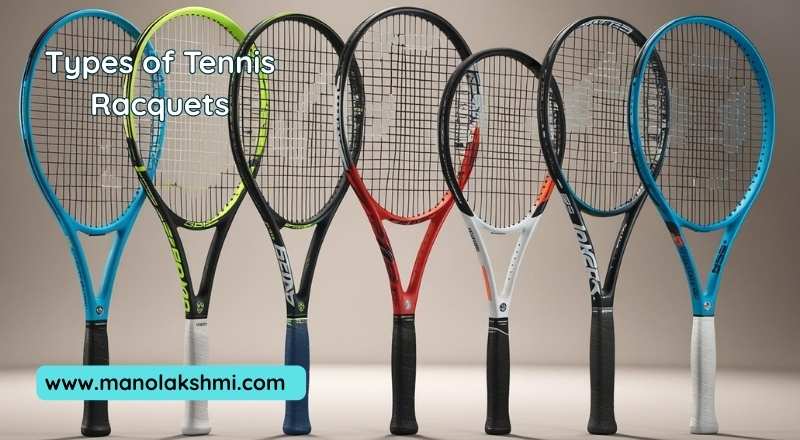
As the main point of contact between the player and the ball, the tennis racquet is the fundamental piece of equipment in the sport. Understanding the nuances of racquet design is crucial for making an informed choice.
Materials and Technology:

Modern tennis racquets are constructed from a variety of materials, each offering distinct performance characteristics. Graphite is a popular choice due to its lightweight yet stiff properties, providing a good balance of power and control. Aluminum racquets, known for their affordability and durability, are a good choice for novice or casual tennis players.
Composite materials, blending graphite with other fibers like Kevlar or fiberglass, aim to combine the benefits of different materials, offering enhanced feel or stability.
Technological advancements continually refine racquet design. Comfort, power transfer, and spin potential in tennis rackets are enhanced through innovations like vibration-damping systems, specialized string patterns, and frame geometries. The weight, balance, head size, and stiffness of a racquet are also critical factors influenced by the materials and technology employed in its construction.
Choosing the Right Racquet:
Selecting the ideal racquet involves considering several factors, including skill level, playing style, and physical attributes. Beginners often benefit from larger head sizes, which offer a more generous sweet spot and increased forgiveness on off-center hits. Intermediate and advanced players may prefer smaller head sizes for enhanced control and precision.
A racquet’s maneuverability and swing speed are affected by its weight and balance point. Lighter racquets are easier to swing quickly, while heavier racquets can provide more stability and power. Grip size is another essential consideration for comfort and control; an improperly sized grip can lead to discomfort and even injury.
It is highly recommended to demo different racquets before purchasing to assess how they feel and perform on the court. Consulting with a knowledgeable tennis professional can also provide valuable guidance in the selection process.
Tennis Balls
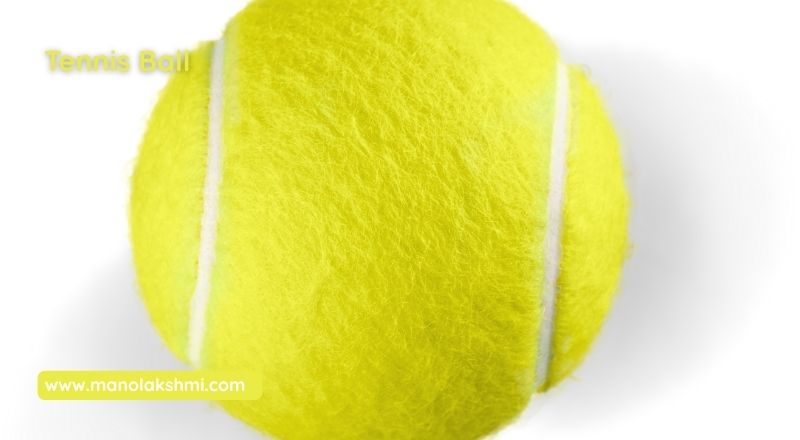
The seemingly simple tennis ball plays a significant role in the game’s dynamics. Different types of balls are designed for specific playing conditions and skill levels.
Types and Brands:
Tennis balls are categorized based on factors such as construction (pressurized vs. pressureless), felt material, and intended playing surface. Pressurized balls offer optimal bounce and responsiveness but gradually lose pressure over time, even when not in use.
Pressureless balls, on the other hand, maintain a consistent bounce throughout their lifespan, although they may feel slightly harder initially. Different brands often have variations in their felt composition, affecting durability and playability.
Some balls are specifically designed for hard courts, offering increased durability, while others are optimized for softer surfaces like clay or grass, providing enhanced grip. High-altitude balls are also available, designed to counteract the effects of thinner air on ball flight.
Proper Ball Selection for Training:
Choosing the appropriate tennis ball for training is essential for effective practice. For general practice and developing fundamental skills, standard pressurized balls are often preferred for their consistent and lively bounce.
However, for specific drills focusing on endurance or repetition, pressureless balls can be a more economical and long-lasting option. Junior players may benefit from using transition balls, which are softer and bounce lower, making it easier for them to develop proper technique. When practicing on a specific court surface, using balls designed for that surface can provide a more realistic playing experience.
Footwear
Proper footwear is crucial for tennis players due to the sport’s demanding lateral movements, quick stops, and starts. Wearing the wrong shoes can lead to discomfort, blisters, and an increased risk of ankle and knee injuries.

- Importance of Proper Shoes: Tennis shoes are specifically designed to provide the necessary support, stability, and traction for the unique demands of the game. They typically feature a low-to-the-ground profile for stability during lateral movements, reinforced uppers to withstand the stresses of quick changes in direction, and durable outsoles designed for specific court surfaces. To minimize joint stress, sufficient cushioning plays a vital role in absorbing impact. Wearing running shoes or cross-trainers for tennis is not recommended as they lack the lateral support and outsole durability required for the sport.
- Recommended Brands and Styles: Several reputable brands specialize in tennis footwear, offering a wide range of styles to suit different foot types and playing preferences. Popular brands often incorporate specific technologies to enhance stability, cushioning, and durability. Factors to consider when choosing tennis shoes include arch support, breathability, and the type of court surface typically played on. Different outsole patterns are designed for optimal grip on hard courts, clay courts, or all-court surfaces. Trying on different pairs and walking or making lateral movements in them is crucial to ensure a comfortable and secure fit. It’s important to replace tennis shoes regularly because their cushioning and support deteriorate with use over time.
Accessories

Beyond the essential racquet, balls, and shoes, various accessories can enhance a player’s comfort, performance, and training effectiveness.
- Grips, Strings, and Bags: The grip is the direct point of contact between the player and the racquet, significantly impacting feel and control. Overgrips can be added to the base grip to provide better tackiness and absorb sweat, and they should be replaced regularly as they wear down. Tennis strings generate the power and control of a shot, and different string materials (e.g., synthetic gut, polyester, natural gut) and tensions can significantly affect racquet performance. Players can experiment with different string setups to find what suits their playing style best. Tennis bags are essential for transporting and organizing equipment, with various sizes and designs available to accommodate different needs.
- Recommended Training Tools: Several training tools can aid in skill development and physical conditioning for tennis. Items such as agility ladders and cones can improve footwork and speed. Resistance bands can be used for strengthening exercises targeting tennis-specific muscle groups. Ball machines provide consistent ball feeds for practicing various shots and drills. Target cones can help players develop accuracy and placement. Utilizing these tools can add variety and effectiveness to training sessions, accelerating progress and improving overall performance.
Key Phrase: “Gear Up for Success”
Selecting the right equipment and gear is not merely about possessing the necessary items; it is a strategic investment in one’s tennis journey. By understanding the features and benefits of different racquets, balls, footwear, and accessories, players can optimize their performance, minimize the risk of injury, and ultimately “Gear Up for Success” on the court.
Basic Rules of Tennis
For fair play and full appreciation of tennis’s complexities, understanding its basic rules is essential for both participants and viewers.
Scoring System
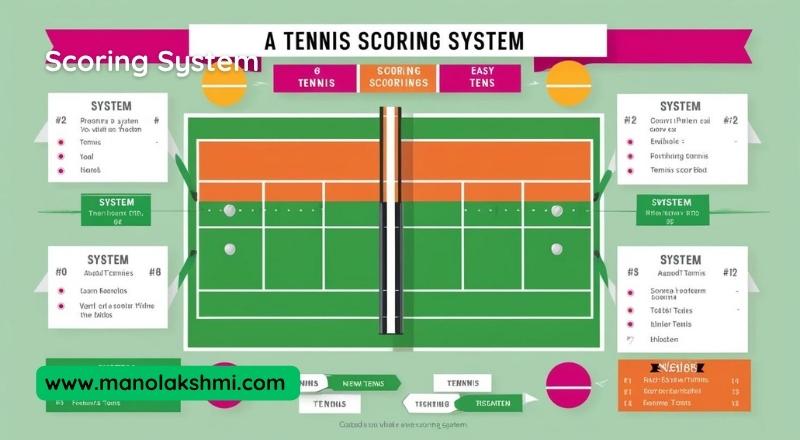
The scoring system in tennis is unique and hierarchical, consisting of points, games, and sets.
Understanding points, games, and sets: A point is the basic unit of scoring. To win a game, a player must score at least four points and have at least a two-point lead over their opponent. The scoring progression within a game is typically as follows:
A typical scoring system in a game progresses through the following stages: 0 (referred to as “love”), 15, 30, 40, and finally, “game”. In tennis, if both players score 40 points (deuce), the next point won gives that player “advantage.” Scoring continues from there.
The server secures victory in the game by winning the next point. When a player gains an advantage and the opponent wins the next point, the score confidently resets to deuce. The game concludes when a player achieves a two-point advantage.
To win a game, a player or team must achieve at least six points and have a lead of two or more points over their opponent. Many matches, however, utilize tie-breaks to resolve sets when the score reaches 6-6.
Tie-breaks and advantages: A tie-break is a special game played when a set reaches 6-6. The rules of a tie-break differ from regular games. Typically, the first player to reach seven points with a two-point lead wins the tie-break and the set (usually recorded as 7-6).
After the initial serve, the service switches between players every two points. In some formats, particularly in the final set of a match, an “advantage set” may be played instead of a tie-break. In an advantage set, play continues until one player has won at least six games and is two games ahead. This can lead to very long and dramatic sets.
Match Formats

Tennis matches are played in singles or doubles formats and differ between professional and recreational play.
- Singles vs. doubles: A singles match involves one player competing against a single opponent. In contrast, a doubles match features two teams, each composed of two players, competing against each other.
Doubles play requires strong communication and court coverage strategies between partners. The court dimensions are the same for both singles and doubles, but in doubles, the outer tramlines are considered in play.
- Professional vs. recreational play: Professional tennis tournaments typically follow standardized rules and formats set by governing bodies like the ATP (Association of Tennis Professionals) and WTA (Women’s Tennis Association).
Matches are often best-of-three sets for most events, while Grand Slam tournaments feature best-of-five sets for men’s singles. Recreational play is more flexible and can be adapted to the preferences of the players, often involving shorter formats or variations in scoring.
Court Dimensions and Surfaces
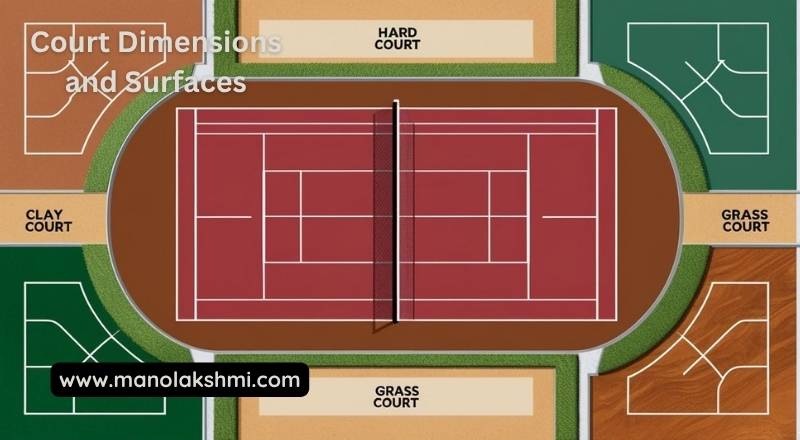
The tennis court has specific dimensions, and the surface on which the game is played significantly impacts the style of play.
Types of courts (grass, clay, hard): There are three primary types of tennis court surfaces:
- Grass courts: These are the fastest surfaces, resulting in low ball bounces and quick points. Wimbledon is unequivocally the most prestigious tennis tournament in the world, and it takes place exclusively on grass courts.
- Clay courts: These are the slowest surfaces, producing high ball bounces and allowing players more time to react. The French Open stands as the most prestigious tournament played on clay courts.
- Hard courts: These offer a medium-fast pace and a more consistent bounce compared to grass or clay. Both the US and the Australian Open are played on hard courts.
Impact on gameplay: The court surface significantly influences the strategies and techniques employed by players. On faster surfaces like grass, big serves and volleys are often advantageous. On slower surfaces like clay, players tend to engage in longer rallies, utilizing topspin and strategic court coverage. Hard courts offer a balance and suit a wider range of playing styles.
Key Phrase: “Know the Rules”
A thorough understanding of the rules of tennis is essential for fair play, strategic decision-making, and overall enjoyment of the sport.
Fundamental Skills

Developing fundamental skills is crucial for any tennis player looking to improve their game. These skills form the building blocks for more advanced techniques and strategies.
Strokes Overview
The basic strokes in tennis include the forehand, backhand, serve, volley, overhead, and drop shot. Each stroke has its mechanics and purpose.
- Forehand and backhand: The forehand is typically the most natural and powerful groundstroke for right-handed players, struck on their dominant side. In tennis, the backhand stroke is decisively executed on the player’s non-dominant side. Players can choose to execute this stroke with either one or two hands, each technique providing distinct benefits regarding power and control.
- Serve and volley: The serve starts the point of the game. It is the action performed to initiate play by putting the ball in motion. It is a complex motion that involves a toss, body rotation, and hitting the ball with power and accuracy. In tennis, a volley refers to a stroke performed near the net where the ball is struck before it touches the ground. A serve-and-volley strategy involves hitting a strong serve and then moving quickly to the net to hit a volley, aiming to end the point quickly.
- Overheads and drop shots: An overhead is similar to a serve but is performed when the ball is above the player’s head and not as a serve. This method is frequently effective for a point when the opponent executes a high lob. A drop shot is a delicate shot that lands just over the net with very little bounce. Designed to catch the opponent off guard if they are positioned far behind the baseline.
Footwork and Positioning
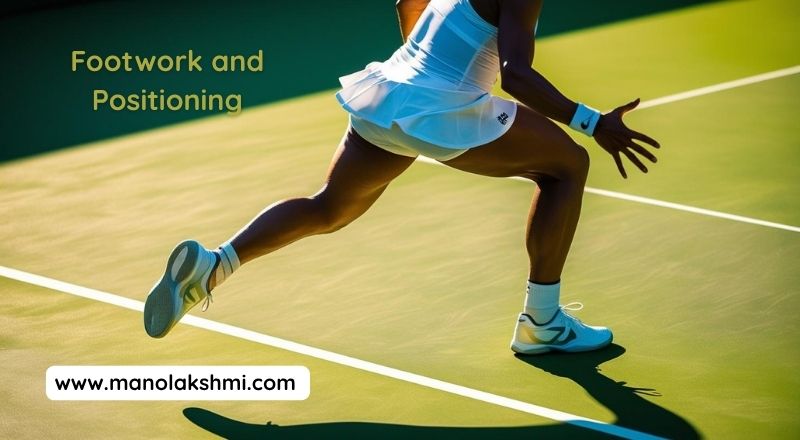
Efficient footwork and strategic positioning are critical for getting into the correct position to hit the ball effectively and cover the court.
- Importance of footwork in tennis: Effective footwork is crucial for players to swiftly access the ball, stay balanced, and produce powerful and controlled shots. For optimal preparation for the next shot, employ small, quick steps combined with lateral movements to effectively adjust to the ball’s trajectory.
- Drills to improve movement: Various drills can help improve footwork, including shadow footwork (practicing movements without a ball), cone drills (agility and change of direction), and reaction drills (responding quickly to a coach or partner’s feed).
Grip Types

The way a player holds the racquet (the grip) significantly influences the type of shot they can hit and the amount of spin they can generate.
Continental, eastern, and western grips: Tennis uses several basic grip types.
- Continental grip: This grip is frequently employed for serves, volleys, and overheads due to its adaptability, enabling flatter shots and slices.
- Eastern grip (forehand and backhand): These grips offer a balance of power and control and are often a good starting point for beginners.
- Western grip (forehand): This grip allows for a lot of topspin and a high ball bounce, but can be challenging for low balls.
- When to use each grip: The choice of grip depends on the specific shot being hit and the desired outcome. Players may adjust their grip slightly depending on the situation and their playing style. Experimenting with different grips can help players develop a wider range of shots.
Key Phrase: “Master the Basics”
A solid foundation in the fundamental skills of tennis is essential for long-term improvement and the ability to execute more advanced techniques and strategies effectively.
Advanced Techniques
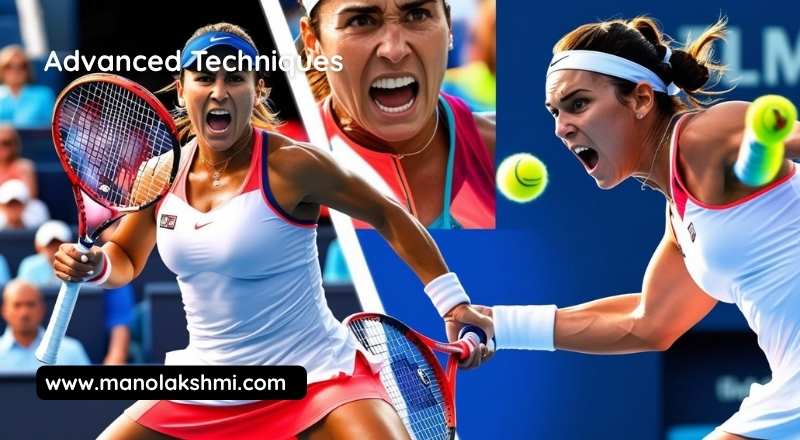
This section explores techniques and strategies designed to greatly improve a player’s proficiency and performance in the game. Mastering these advanced techniques is crucial for moving beyond basic proficiency and achieving a higher level of gameplay.
Spin and Power
This subsection focuses on manipulating the ball’s rotation and generating substantial force behind shots, adding layers of complexity and difficulty for opponents.
- Generating topspin and backspin: Understanding and executing different spin techniques is fundamental to controlling the trajectory, bounce, and overall behavior of the ball.
- Topspin: Achieved by brushing upwards on the back of the ball, topspin creates a forward rotation, causing the ball to dip faster and bounce higher and forward. This can be used for aggressive shots that stay in play and are difficult to handle upon the bounce. Drills focusing on the proper grip, wrist action, and body mechanics are essential for developing consistent topspin.
- Backspin (Underspin/Slice): Generated by brushing downwards on the back of the ball, backspin imparts a backward rotation, causing the ball to float more and bounce lower and with less forward momentum. This can be effective for defensive shots, short drop shots, and disrupting an opponent’s rhythm. Practice involves controlling the angle of the racket face and the downward brushing motion.
- Techniques for powerful shots: Developing the ability to hit with significant power allows for aggressive play and can put immense pressure on the opponent.
Efficient energy transfer is essential, beginning with the body, progressing through the kinetic chain, and ultimately reaching the ball. Proper footwork to get into the correct position, a full swing that utilizes the legs, core, and arms in a coordinated manner, and a clean contact point are all crucial elements. Different types of powerful shots, such as flat drives and powerful serves, require specific adjustments to technique. Training should incorporate exercises to build strength and explosive power, as well as drills to refine the biomechanics of the swing for maximum efficiency and control.
Strategies for Gameplay
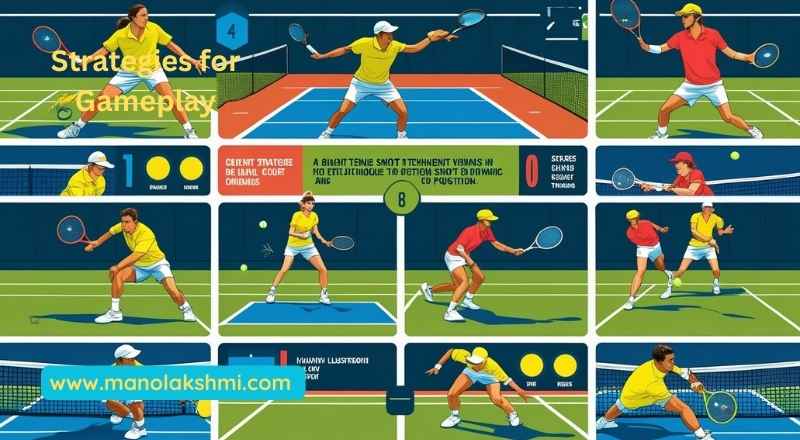
This subsection explores the tactical aspects of the game, focusing on planning and adapting one’s approach based on the situation and the opponent.
- Offensive vs. defensive strategies: Understanding when to attack and when to play defensively is key to controlling the flow of a match.
- Offensive Strategies: Taking the initiative and dictating play to induce opponent errors are key aspects of this approach. This might include aggressive shot selection, attacking the net, and looking for opportunities to finish points decisively. Effective offensive play often relies on strong serves, powerful groundstrokes, and quick reactions.
- Defensive Strategies: These focus on neutralizing an opponent’s attack, retrieving difficult shots, and waiting for an opportunity to counter. This might involve using spin to control the pace, hitting deep to limit the opponent’s options, and maintaining a solid defensive posture.
Patience, agility, and accurate shot placement are crucial for effective defensive play. A well-rounded player is characterized by their ability to seamlessly switch between offensive and defensive strategies.
- Analyzing opponents’ weaknesses: A crucial aspect of strategic play involves identifying and exploiting an opponent’s vulnerabilities.
This requires careful observation during the match, paying attention to their preferred shots, movement patterns, tendencies under pressure, and any apparent weaknesses in their technique or strategy. Once weaknesses are identified, a player can tailor their tactics to repeatedly target these areas, increasing their chances of winning points. This might involve hitting their weaker side, exploiting their slow footwork, or using specific types of shots that they struggle to handle. Developing strong observational skills and the ability to adapt one’s game plan accordingly are essential for competitive success.
Mental Game and Focus
This subsection emphasizes the critical role of psychological factors in achieving peak performance. Mental strength frequently determines the outcome of games, particularly when they are close and intense.
Importance of mental toughness: The ability to remain resilient, focused, and positive, even when facing adversity, is a defining characteristic of mentally tough players.
Mental toughness involves managing emotions, overcoming setbacks, maintaining belief in one’s abilities, and persevering through challenges. Mind stability is cultivated through conscious effort and sustained exercise.
Techniques such as positive self-talk, goal setting, and learning from mistakes can contribute to building resilience. Mentally tough players are better equipped to handle pressure. Stay focused during long matches, and bounce back from errors or losses.
Visualization and concentration techniques: Performance can be significantly improved by enhancing focus and mental imagery.
Visualization: Visualize successful shot execution and positive match results through mental imagery. Mentally visualizing desired actions is a powerful strategy that significantly boosts players’ confidence, sharpens their muscle memory, and elevates their overall performance. Regular visualization practice can help program the mind for success.
Concentration Techniques: Maintaining focus and minimizing distractions are crucial for consistent play. Various techniques can be employed to improve concentration, such as deep breathing exercises, mindfulness, and focusing on specific cues before and during each point. Developing strong concentration skills allows players to stay present in the moment and execute their game plan effectively, even under pressure.
Key Phrase: “Elevate Your Game”
The mastery of advanced techniques, strategic thinking, and a strong mental game are all essential components in the pursuit of elevating one’s game to a higher level of skill and competitive success. Consistent practice, dedicated effort, and a willingness to learn and adapt are crucial for achieving significant improvement and reaching one’s full potential.
Fitness and Conditioning for Tennis Excellence

Physical fitness is paramount in tennis, directly influencing a player’s agility, endurance, power, and overall performance. Neglecting this crucial aspect can lead to decreased efficiency, increased risk of injury, and limited potential on the court.
The Indispensable Role of Physical Fitness in Tennis
Tennis demands a unique blend of physical attributes. Players need exceptional cardiovascular endurance to sustain rallies and matches that can extend for hours. Court coverage and quick reactions to opponents’ shots hinge on agility and speed. Explosive power in the legs and core is critical for serving, groundstrokes, and volleys. Strength in the shoulders, arms, and wrists contributes to shot power and control. Furthermore, flexibility and a well-conditioned body are vital for injury prevention, allowing players to withstand the repetitive and often strenuous movements inherent in the sport. A physically fit player experiences enhanced on-court movement, improved shot consistency, greater resilience to fatigue, and a reduced susceptibility to common tennis-related injuries.
Comprehensive Fitness Routines for Tennis Players
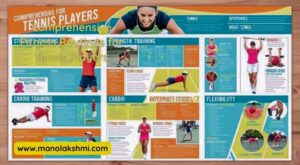
A well-structured fitness regimen should incorporate various components to address the specific physical demands of tennis.
Cardiovascular Training: This forms the foundation of tennis fitness. Activities like running (intervals, distance), cycling, swimming, or using an elliptical trainer improve stamina and the body’s ability to deliver oxygen to working muscles. Aim for at least three to four sessions per week, varying the intensity and duration to build both aerobic capacity and anaerobic endurance for those intense bursts of activity during points.
Strength Conditioning: Building strength in key muscle groups is crucial for power generation and injury prevention. Focus on exercises that target the legs (squats, lunges, calf raises), core (planks, Russian twists, medicine ball throws), shoulders (overhead press, lateral raises), back (rows, pull-ups/assisted pull-ups), and arms (bicep curls, triceps extensions). Include a mix of compound exercises, which target several muscle groups at once, and isolation exercises. Two to three strength training sessions per week, with appropriate sets, repetitions, and rest periods, are recommended.
Flexibility and Injury Prevention: Maintaining good flexibility is essential for a full range of motion, efficient technique, and minimizing the risk of strains and sprains. Incorporate dynamic stretching before playing (e.g., leg swings, arm circles, torso twists) and static stretching after playing or during separate sessions (holding stretches for 20-30 seconds). Foam rolling can also be beneficial for releasing muscle tension. Tennis players should prioritize specific exercises for the shoulders, hips, hamstrings, and calves.
Strategic Nutrition for Optimal Tennis Performance

Proper nutrition provides the fuel and building blocks necessary for training, recovery, and peak performance on match day.
- Pre-Match and Post-Match Nutrition: Pre-match meals should focus on easily digestible carbohydrates to provide energy for the upcoming match. Examples include pasta, rice, bananas, and energy bars.
To prevent digestive discomfort, it’s best to avoid heavy, fatty foods. Post-match nutrition is crucial for replenishing glycogen stores and aiding muscle recovery. After playing, consume carbohydrates and protein within 30 to 60 minutes. Protein shakes, yogurt with fruit, or a turkey sandwich are good options.
- Hydration Strategies: Maintaining proper hydration is critical before, during, and after tennis. Lack of adequate hydration can cause tiredness, reduced physical capacity, and muscle spasms. Drink plenty of water throughout the day, and during matches, consume fluids regularly, especially during breaks. Electrolyte drinks can be beneficial during long or intense matches to replace lost salts. Pay attention to thirst cues and aim to drink consistently.
Key Phrase: “Stay Fit, Play Better” – The Undeniable Link
This concise phrase encapsulates a fundamental truth in tennis. Consistent dedication to fitness and proper conditioning directly translates to enhanced on-court performance, increased longevity in the sport, and a greater enjoyment of the game. By emphasizing fitness and proper nutrition, players can maximize their performance and reach objectives.
Training and Practice Routines
A structured and consistent training regimen is paramount for achieving continuous improvement and reaching one’s full potential. This section delves into the essential components of effective training and practice routines.
Creating a Personalized Training Plan
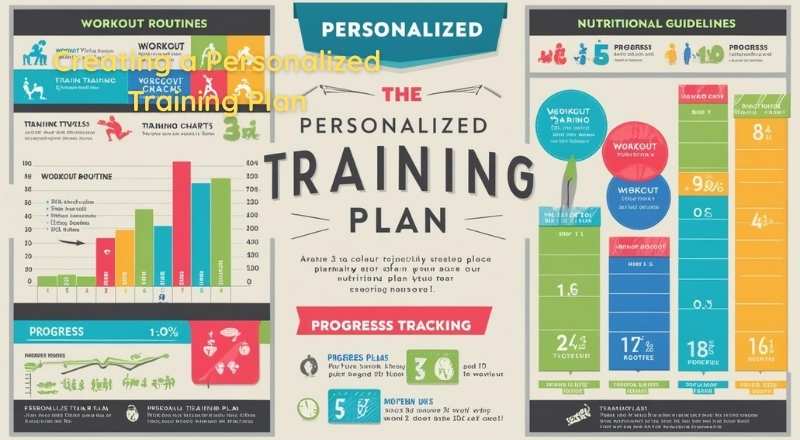
A generic training approach is often insufficient. A personalized training plan, tailored to individual strengths, weaknesses, goals, and available resources, is crucial. This process involves:
- Needs Analysis: Identifying current skill levels, physical conditioning, and specific areas requiring improvement. This can involve self-assessment, feedback from coaches or training partners, and even performance tracking.
- Goal Setting: Establishing objectives that are specific, measurable, attainable, relevant, and time-bound (SMART). These goals should encompass both short-term objectives, such as mastering. A new technique, and long-term aspirations, like competing at a higher level.
- Exercise Selection: Choosing appropriate drills, exercises, and training activities that directly address the identified needs and support the established goals. This choice should take into account the principles of specificity, progressive overload, and variation.
- Periodization: Structuring the training plan into distinct phases (e.g., preparation, competition, transition) with varying intensities and volumes to optimize performance and prevent overtraining.
- Scheduling and Consistency: Establishing a realistic and consistent training schedule that fits within one’s lifestyle. Regularity is key to developing muscle memory, improving fitness, and making consistent progress.
- Monitoring and Adjustment: Regularly tracking progress, evaluating the effectiveness of the training plan, and making necessary adjustments based on performance, feedback, and any unforeseen circumstances.
Drills for Skill Development
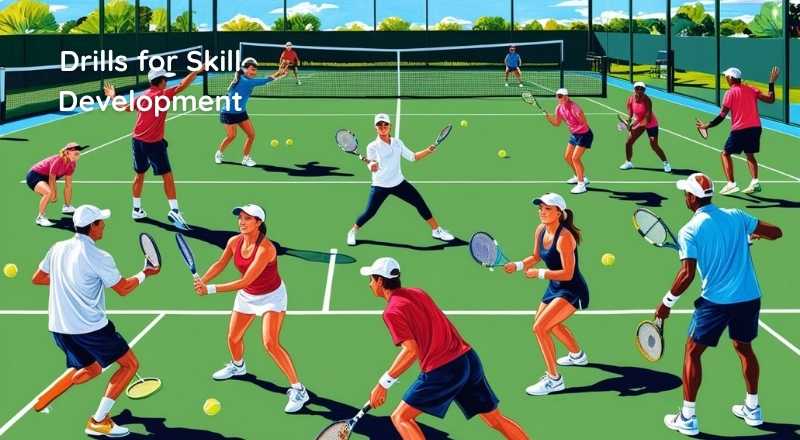
Drills are concentrated, repetitive exercises intended to refine particular skills and methodologies. They provide a structured environment for developing accuracy, consistency, and efficiency.
- Solo Drills: These drills can be performed independently and are invaluable for developing fundamental skills, building muscle memory, and focusing on individual technique without the added complexity of interacting with a partner. Examples include practicing serves, volleys, footwork patterns, and specific movement sequences. The emphasis should be on proper form and repetition.
- Partner Drills: Participating in drills with a training partner incorporates aspects of interaction, timing, and responsiveness. These drills help develop skills in a more dynamic and game-like context. Examples include rallying with specific constraints (e.g., focusing on cross-court shots), practicing attacking and defensive scenarios, and working on serve and return combinations. Effective communication and mutual understanding between partners are essential for maximizing the benefits of these drills.
Importance of Match Play
While drills are crucial for skill development, match play provides. The opportunity to apply those skills in a competitive and unpredictable environment. It enhances strategic thinking, decision-making, mental toughness, and the ability to adapt to different opponents and game situations.
Finding Practice Partners: Regularly engaging in practice matches is essential for simulating real game scenarios. Seek out partners with varying skill levels and playing styles to broaden experience and challenge oneself. Communication within the training community, approaching fellow players at practice facilities, and utilizing online platforms can aid in finding suitable practice partners.
Joining Local Clubs and Leagues: Participating in local clubs and leagues offers structured opportunities for regular match play against a diverse range of opponents. These environments often foster a competitive yet supportive atmosphere, providing valuable experience and the chance to test one’s skills under pressure. Furthermore, clubs and leagues often organize social events and provide access to coaching and training resources.
Key Phrase: “Train to Win”
This key phrase encapsulates the mindset and intensity that should underpin all training and practice routines. It represents a dedication, concentrated effort, intentional practice, and an ongoing process of progress. “Train to Win” implies approaching each training session and match with a competitive spirit. A desire to learn and overcome challenges, and a dedication to maximizing one’s potential. It is not solely about the outcome of each session but rather about the consistent application of effort and the unwavering pursuit of excellence.
Competing and Tournaments
Participating in competitions and tournaments is a crucial aspect of growth and development in any discipline. Understanding the structure of these events and preparing effectively are essential for a positive and successful experience.
Understanding Tournament Structures
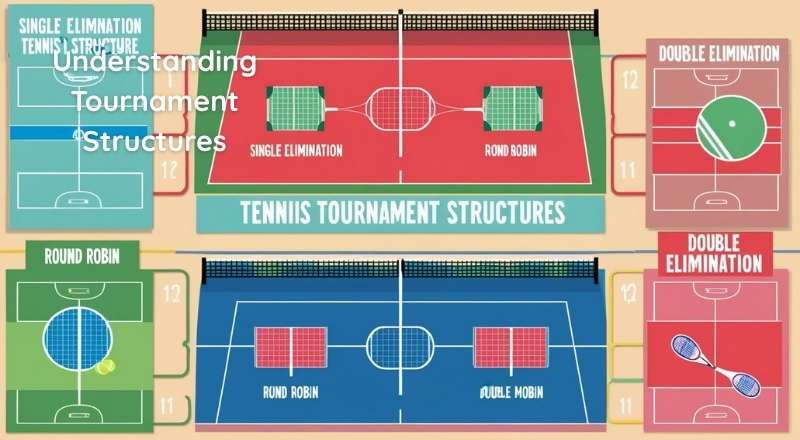
Tournaments are organized at various levels, each with its scope and intensity:
Local Competitions: These are often introductory-level events held within a specific community or club. They provide opportunities for beginners to gain experience and for individuals to test their skills in a familiar environment. The atmosphere is usually less formal, and the focus is often on participation and learning.
Regional Competitions: These events draw participants from a wider geographical area, encompassing multiple local communities or regions. The level of competition is generally higher than in local tournaments, and they can serve as stepping stones to national-level events.
National Competitions: These are the highest level of competition within a country, attracting top talent nationwide. They often have strict qualification requirements and offer significant recognition and prizes. Participating in national tournaments demonstrates significant skill and commitment.
Entry Requirements and Seeding: Each tournament level has specific entry requirements, which may include membership in a governing body, meeting certain skill level criteria, or paying an entry fee. Seeding is a common method used in participant ranking. This method categorizes participants according to their previous achievements or existing ratings. This system aims to prevent the highest-ranked players from meeting in the early rounds of a tournament. Leading to more balanced and competitive matches throughout the event. Understanding the entry requirements and how seeding works is important for planning participation in tournaments.
Preparing for Matches
Effective preparation is key to performing well in competitions. This has both cognitive and actionable components.
Mental Preparation and Strategies: Physical training and mental preparation hold equal significance. This includes developing strategies for approaching matches, managing pre-match anxiety, and maintaining focus during competition. Visualization techniques, positive self-talk, and stress management exercises can be valuable tools. To succeed, it’s crucial to understand your opponent’s strengths and weaknesses and develop a corresponding game plan. Adaptability and the ability to adjust strategies during a match are hallmarks of successful competitors.
Game Day Routines: Establishing consistent game day routines helps create a sense of familiarity and control, reducing anxiety and allowing for optimal performance. These routines may include specific warm-up exercises, nutritional habits, and pre-match rituals. Planning for practicalities such as travel, equipment checks, and arrival time at the venue is also part of a successful game day routine.
Sportsmanship and Etiquette
Maintaining high standards of sportsmanship and adhering to proper etiquette are fundamental to the integrity and spirit of competition:
Importance of Respect and Integrity: Show respect for competitors, referees, and the established competition guidelines. Integrity involves playing fairly and honestly, upholding ethical principles even in the heat of competition. A positive and fair environment thrives on respect and integrity among all participants.
Conduct On and Off the Court: Conduct during a match includes adhering to the rules, accepting officials’ decisions gracefully, and treating opponents with respect, regardless of the outcome. Off the court, sportsmanship involves representing oneself and the sport in a positive light, being mindful of behavior at the venue and in interactions with others. Good sportsmanship extends beyond the competition itself, fostering a positive community around the sport.
Key Phrase: “Play with Honor”
This key phrase encapsulates the essence of competing with integrity, respect, and a commitment to the spirit of fair play. It serves as a guiding principle for all aspects of participation in competitions and tournaments, emphasizing that how one competes is as important as the outcome itself.
Resources for Improvement
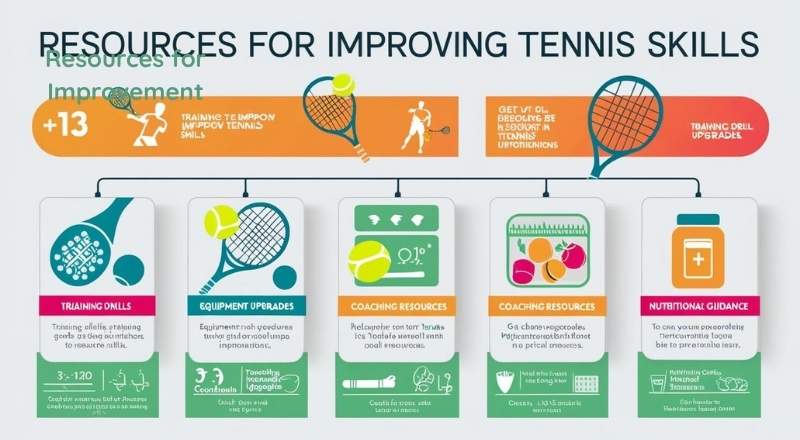
Continuous growth and refinement are crucial for long-term success in tennis. Adopt a mindset of continuous learning and proactively seek out resources to improve your understanding of the game.
Books and Online Courses:
Immerse yourself in the strategic and tactical aspects of tennis through insightful books written by renowned coaches and players. Explore online courses that offer structured learning paths, covering everything from fundamental techniques to advanced game plans. Platforms like Coursera, Udemy, and specialized tennis websites often provide comprehensive programs.
Professional Coaching Options:
Consider investing in professional coaching to receive personalized guidance and feedback. Qualified coaches can identify areas for improvement, tailor training regimens. To your specific needs, and provide invaluable insights into match play and mental toughness. Discover opportunities for one-on-one sessions, group-based clinics, and focused training camps.
Videos and Tutorial Resources:
Visual learning can be highly effective for understanding and implementing new techniques. Utilize the vast array of video resources available online. Numerous tutorials are available on platforms like YouTube, where coaches and professional players demonstrate drills, stroke mechanics, and strategic concepts. Look for reputable channels and creators who offer clear and concise instructions.
Tennis Communities and Forums:
Engage with fellow tennis enthusiasts through online communities and forums. These platforms provide opportunities to discuss strategies, ask questions, share experiences, and learn from others. Connecting with a supportive network of players can offer motivation, encouragement, and diverse perspectives on the game.
Key Phrase: “Always Keep Learning”
This principle should be a guiding force in your tennis journey. The sport is constantly evolving, and a commitment to continuous learning will ensure that you stay ahead of the curve, adapt to new challenges, and maximize your potential. Seek every chance to broaden your understanding and improve your abilities.
click here: Sport: Each major sport throughout the world is popular
Conclusion
Recap of Key Learning Points: To summarize our exploration, remember the foundational elements we’ve covered. We began with the essential grip techniques, ensuring a comfortable yet firm connection with the racket.
We then delved into the fundamental strokes: the forehand and backhand, emphasizing proper footwork, swing mechanics, and contact point. Serving, a crucial offensive weapon, was broken down into its various stages, from the toss to the follow-through.
Volleys and overheads, vital for net play, were also addressed, highlighting quick reactions and decisive movements. Furthermore, we discussed the strategic aspects of the game, including court positioning, shot selection, and understanding your opponent’s weaknesses. Consistent practice of these core skills is paramount to building a solid tennis foundation.
Encouragement to Practice and Stay Motivated: The path to tennis mastery is paved with consistent effort and unwavering dedication. Take on difficulties, grow through errors, and acknowledge your achievements, regardless of their size.
Seek out opportunities to play regularly, whether with friends, in lessons, or in competitive matches. Remember that improvement takes time and perseverance. Stay focused on your goals, maintain a positive attitude, and let the joy of the game fuel your motivation.
Don’t be discouraged by setbacks; view them as learning experiences that will ultimately make you a stronger player.
Final Thoughts on Mastering Tennis: Mastering tennis is not merely about hitting the ball; it’s a holistic journey encompassing physical conditioning, mental fortitude, and a deep understanding of the game’s nuances.
It requires patience, discipline, and a continuous desire to learn and evolve. Embrace the process of refinement, constantly seeking ways to improve your technique, strategy, and mental game. The rewards of this journey extend beyond the court, fostering discipline, perseverance, and a lifelong love for the sport.
Key Phrase: “Your Journey Awaits”
Embark on your tennis adventure with enthusiasm and commitment. On the court, every swing of your racket contributes to the unique masterpiece you are creating. The court is your canvas; let each swing be a stroke. The journey of a thousand serves begins with a single toss, and the thrill of a perfectly executed rally is the reward for dedication. Find fulfillment in the world of tennis by embracing the challenge and enjoying the process.
click here: Tennis Racquet: Beginners Right choice Prince Tennis Racquet
